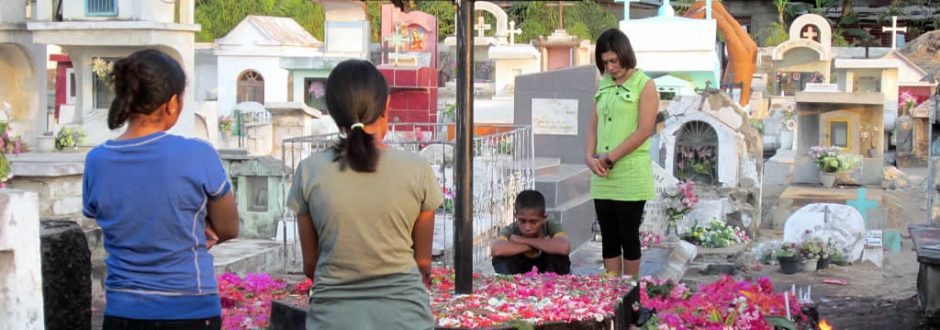The 25th anniversary of East Timor’s Santa Cruz massacre will be especially poignant for those families who still long for a body to bury, some physical link to a child, a brother, a sister who didn’t come home that day in 1991, writes Josephite Sister Susan Connelly.
BY Susan Connelly RSJ
I wonder if any other nation has as many significant recent events to remember in so short a space of time as Timor-Leste. October 16, the murders of the Balibo Five in 1975, signalling the disaster on which they were attempting to report as Australian-based journalists. November 28, 1975, the first declaration of the Democratic Republic of Timor-Leste. December 7, 1975, the invasion by Indonesia. December 17, 1941, the uninvited arrival of the Australian 2/2 Independent Company, a prior invasion.
But November 12 this year marks the 25th anniversary of the Santa Cruz massacre. With church and civic memorials involving every Timorese across the land, it will be especially poignant for those families who still long for a body to bury, some physical link to a child, a brother, a sister who didn’t come home that day in 1991. In Australia too, the day will be marked solemnly by relatives, friends and loved ones of the hundreds of young ones who gave their lives at Santa Cruz.
The story is fairly well known. A Mass was celebrated in the Motael Church in Dili, attended by hundreds of young people to remember their friend Sebastião Gomes who had been killed by the military two weeks before. After Mass, the normal memorial procession to the cemetery took place, sweeping around the bay then south towards the cemetery, just a few kilometres walk.
But there was a difference: Portuguese officials were known to be in town, and the youth were determined to let them know, to let the world know, that their situation was intolerable. The banners they had made were taken from inside their shirts, they began shouting and singing, excited and fearful all at the same time. This was public dissent, an unheard of act, a mighty cry for justice, a plea that someone, anyone, would listen.
When they reached the cemetery the shots began to ring out and the dead began to fall. The Indonesian military were waiting, thrown into knee-jerk but customary brutality at the audacity of the protest. Running, screaming, falling, the procession broke up, people hiding behind the graves or racing to nearby homes. No one knew then, but it was caught on film, and secreted away to Britain and the world.
Bodies, living and dead, were taken away, some to the military hospital. There were more killings that night, not by semi-automatics in among the graves, but by pistol shots to the backs of heads, executions. Indonesia admitted to 19 dead and 91 wounded, a neat figure composed of the numerals of the year. Gareth Evans, the Australian Foreign Minister called it “an aberration”. Two hundred and seventy-one names have since surfaced as belonging to the known dead, or to people who have just never been seen since.
Twenty-five years have passed since that major tipping point in the long struggle for justice. During the following ten years the Timorese people gained their freedom and international recognition for their courage, their non-violence and their refusal to capitulate. They became the first new nation of the new millennium, and although still riven with poverty, their progress has been steady and remarkable.
Nevertheless, one final piece of sovereignty still eludes them, and that concerns the maritime boundaries with Australia. Australian governments have been difficult over this question, resisting the Timorese request to have their claims heard by international arbitration. Deprived of other avenues of discussion by the 2002 Australian decision to withdraw from the United Nations instruments set up for such a purpose, Timor-Leste recently took the step of requiring Australia to enter into a compulsory conciliation under United Nations rules. It is the first time this process has been used, an embarrassment for Australia. The process will conclude in September 2017 with a report. Despite Foreign Minister Julie Bishop’s statements arguing that China should abide by current international requirements over its activities in the South China Sea, she has stated that the Timor Sea conciliation “is not binding”.
However, there is time for Australia to turn this whole problem around. The two nations could agree to enter into the formal discussions usually undertaken by nations desiring to decide on their boundaries. Timor-Leste’s Prime Minister has twice asked the Australian Prime Minister for this process to begin, but he received a negative reply.
The Timorese people have not as yet secured full sovereignty, as their borders have not been finalised. Despite the death toll in the cause of freedom over the 24-year occupation, so memorably symbolised by the self-sacrifice of all those young ones on November 12, 1991, the final freedom of secure, internationally accepted boundaries is still denied them. The only obstacle to this freedom is Australia. The only nation with the ability to end this disgrace is Australia.
For more information check out the Timor Sea Forum, the Timor Sea Justice Campaign and the Maritime Boundaries Office Timor-Leste.
